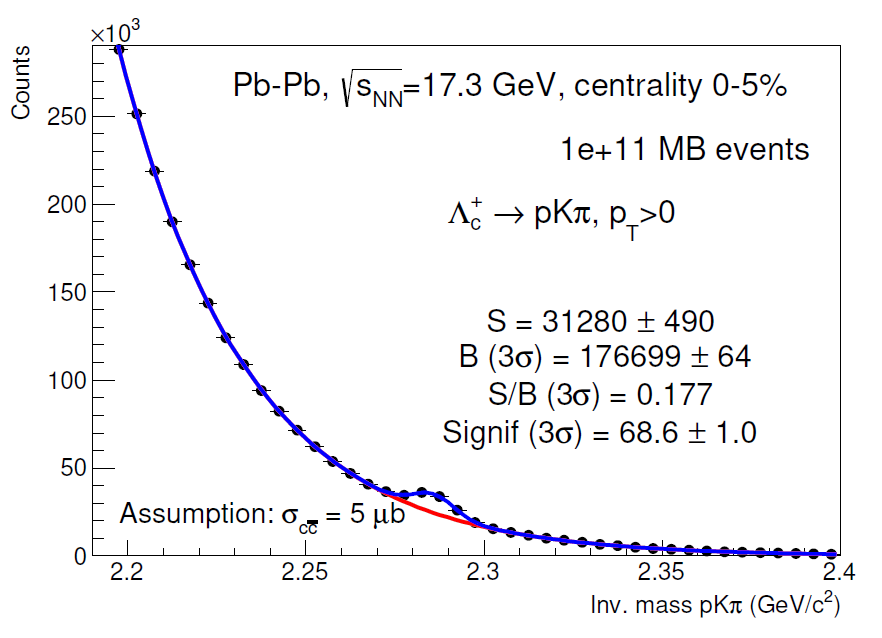(to be updated)
The NA60+ experiment aims at performing accurate measurements of electromagnetic and hard probes of the Quark-Gluon Plasma, at SPS energies, performing an energy scan in the range 20<Elab <160 GeV/nucleon, with a Pb-ion beam. Corresponding periods with a proton beam are also necessary, to provide an appropriate reference for cold nuclear matter effects. Hereafter, some physics performance plots, which assume 1 month of data taking with a Pb beam of 107 / 10s spill and a 4mm thick Pb target. The resulting interaction rate is about 105 Hz.
Low and intermediate mass dileptons
With the expected beam intensity, NA60+ can measure, in the region up to M=3 GeV/c2, the dimuon mass spectrum shown below, corresponding to Pb-Pb collisions at Elab=40 GeV, and considering the 5% most central collisions:
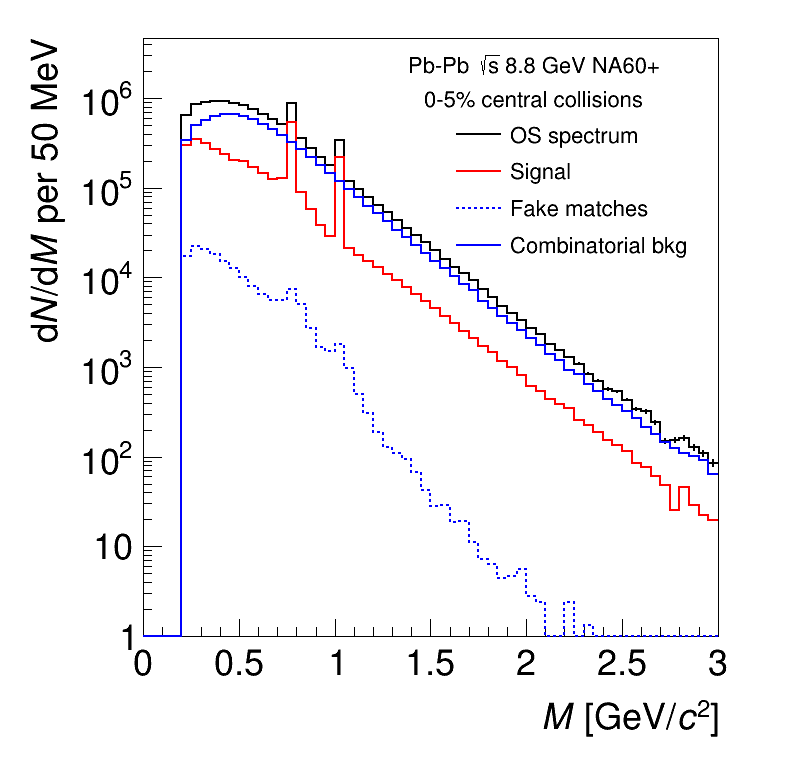
After background and fake match subtraction, the invariant mass spectrum can be described as a sum of contributions from (i) light hadron decays (ii) Drell-Yan process (iii) semi-leptonic decays of charm hadron pairs (iv) thermal dimuons
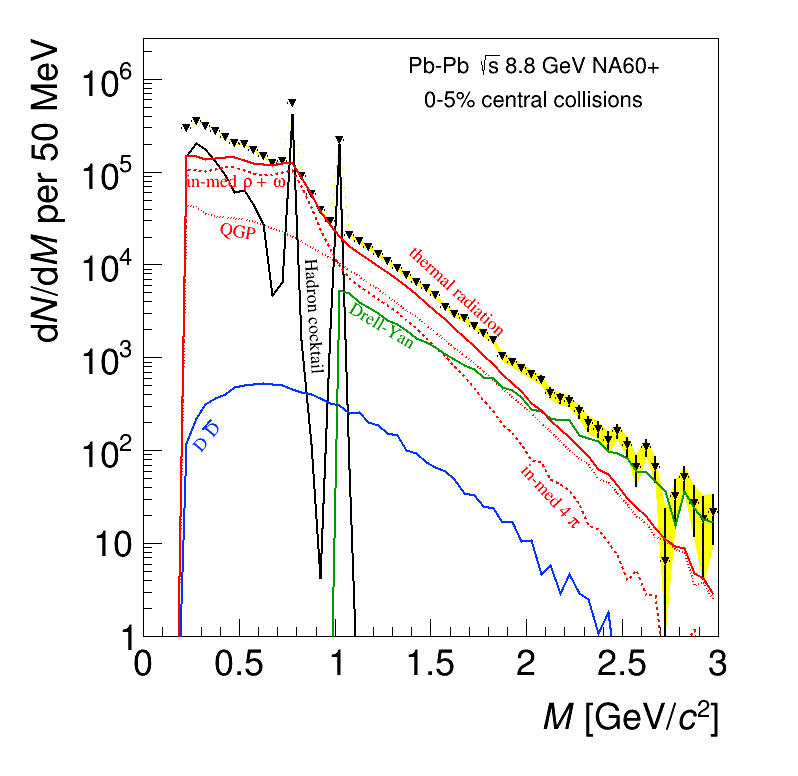
Thermal dimuons and QGP caloric curve
The slope of the intermediate mass (M>1.5 GeV/c2) spectrum, after subtraction of open charm and Drell-Yan contribution, is directly related to the average temperature of the fireball.

The blue points show the energy dependence of the hadronisation temperature (blue circles), obtained via fits to particle abundances with the statistical hadronisation model.
The plot below shows the dimuon invariant mass spectrum, after subtraction of the light hadron decays, Drell-Yan and open charm contribution, together with the result of a fit to the mass region M>1.5 GeV/c2, with the function dN/dM ∝ M3/2 e-M/T . A 2-3% resolution on the T parameter is obtained.
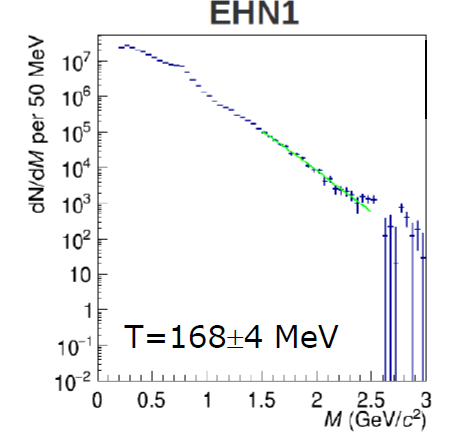
Thermal dimuons as a fireball chronometer
The fireball lifetime can be directly related to the acceptance corrected low-mass dilepton yield in 0.3<M<0.75 GeV/c2 → promising tool to detect “anomalous” variations as a function of collision energy
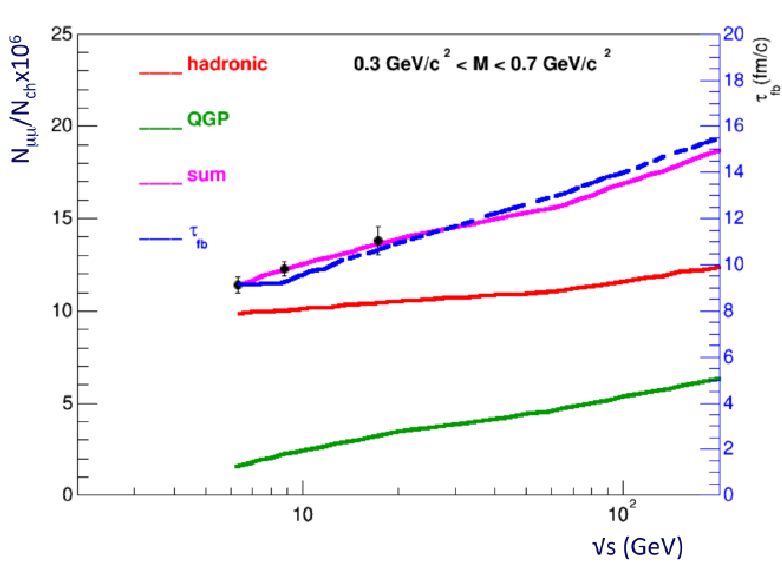
Variations in the fireball lifetime with respect to the default expectation could be triggered by the presence of a soft mixed phase during a first order transition, which may lead to an anomalous increase, due to the burning of latent heat.
Signals of chiral symmetry restoration
Modifications in the mixing of chiral partners ρ and a1 can be detected by studying the mass region 1<M<1.5 GeV/c2. No direct coupling of axial states to the dilepton channel is present, leading to a visible dip in the cross section σ(e+e– → hadrons) in the a1 mass range. Chiral symmetry restoration, expected to occur close to deconfinement, induces a mixing of vector and axial-vector correlators. As a consequence, an enhancement of the dilepton rate should become visible in the a1 mass region. Low-energy measurement are expected to be more sensitive to chiral restoration effects, since the thermal dimuon yield from QGP becomes smaller and the contribution from open charm vanishes.
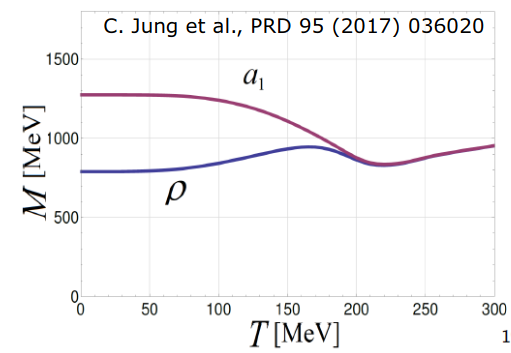
The plot below shows the expected modification of the dimuon spectrum in the a1 mass region. A 20-30% enhancement is expected in case of full mixing
(modeled from Rapp, vanHees, PLB753 (2016) 586). With the foreseen accuracy of the measurement the effect can be clearly detected
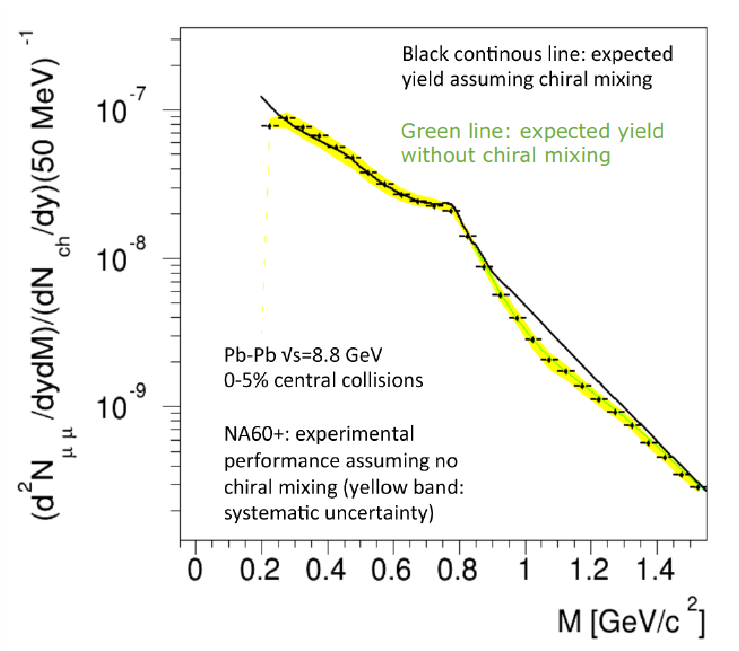
Quarkonium production
At SPS energies, charmonium production is expected to be suppressed if a deconfined medium is produced in nuclear collisions. The former NA50/NA60 experiments had detected an anomalous J/ψ suppression, i.e., beyond the effect due initial state (nPDF modifications) and break-up effects in cold nuclear matter. The effect was shown to reach ~30% in central Pb-Pb collisions at Elab=158 GeV. It is qualitatively consistent with the suppression of the fraction of J/ψ originating from ψ(2S) and χc decays
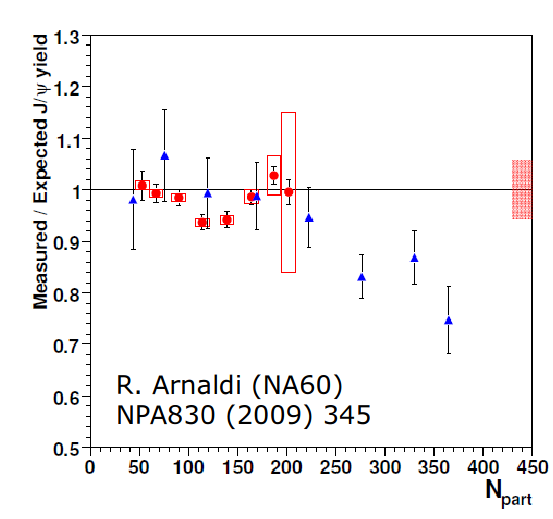
J/ψ
NA60+ aims at measuring J/ψ production in pA collisions over the whole energy range available at the SPS. Physics performance has been evaluated for the moment down to Elab=50 GeV, assuming 5×1013 protons impinging on a target system made of seven nuclear targets, from Be to U, each one with 1 mm thickness. Assuming 3000 spills per day can be delivered, the measurement at each energy will take ~3 weeks, with a beam intensity of 8×108 protons/s. A suppression factor in cold nuclear matter equal to that measured by NA60 at Elab=158 GeV was tentatively assumed.NA60+ aims at measuring J/ψ production in pA collisions over the whole energy range available at the SPS. Physics performance has been evaluated for the moment down to Elab=50 GeV, assuming 5×1013 protons impinging on a target system made of seven nuclear targets, from Be to U, each one with 1 mm thickness. Assuming 3000 spills per day can be delivered, the measurement at each energy will take ~3 weeks, with a beam intensity of 8×108 protons/s. A suppression factor in cold nuclear matter equal to that measured by NA60 at Elab=158 GeV was tentatively assumed.
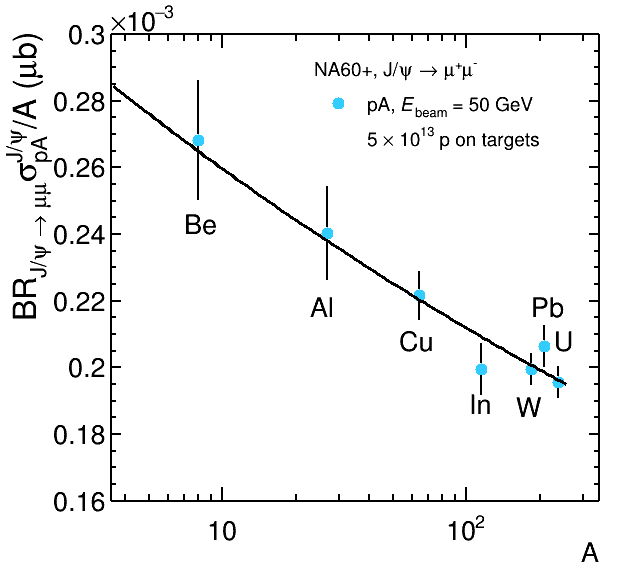
The suppression effect due to cold nuclear matter can be extrapolated, using the Glauber model, to Pb-Pb collisions, and its centrality dependence can be evaluated. Assuming a further anomalous suppression effect of 20%, which sets in when the number nucleons Npart participating in the collisions is >50, its detection is clearly possible down to Elab=50 GeV (and likely at even lower energies). A total of 1012 Pb ions incident on a system of several Pb sub-targets with a total 15% interaction probability was assumed. The corresponding luminosity can be reached in about one month of data taking, at a beam intensity of ~107 Pb/s.
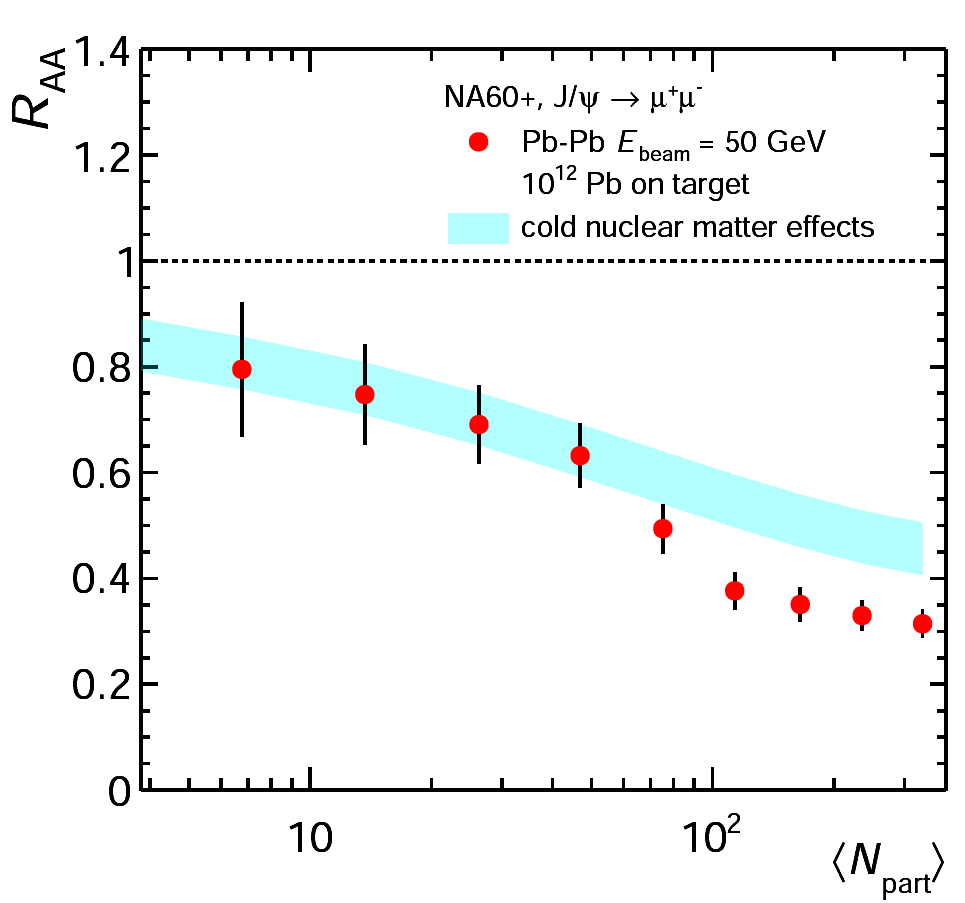
As a function of energy, the expected statistics for J/ψ production in Pb-Pb collisions ranges from ~104 to >105 for each data taking, the corresponding integrated luminosity amounts to L~24 nb-1. A factor 3 suppression for the J/ψ has been assumed in these estimates.
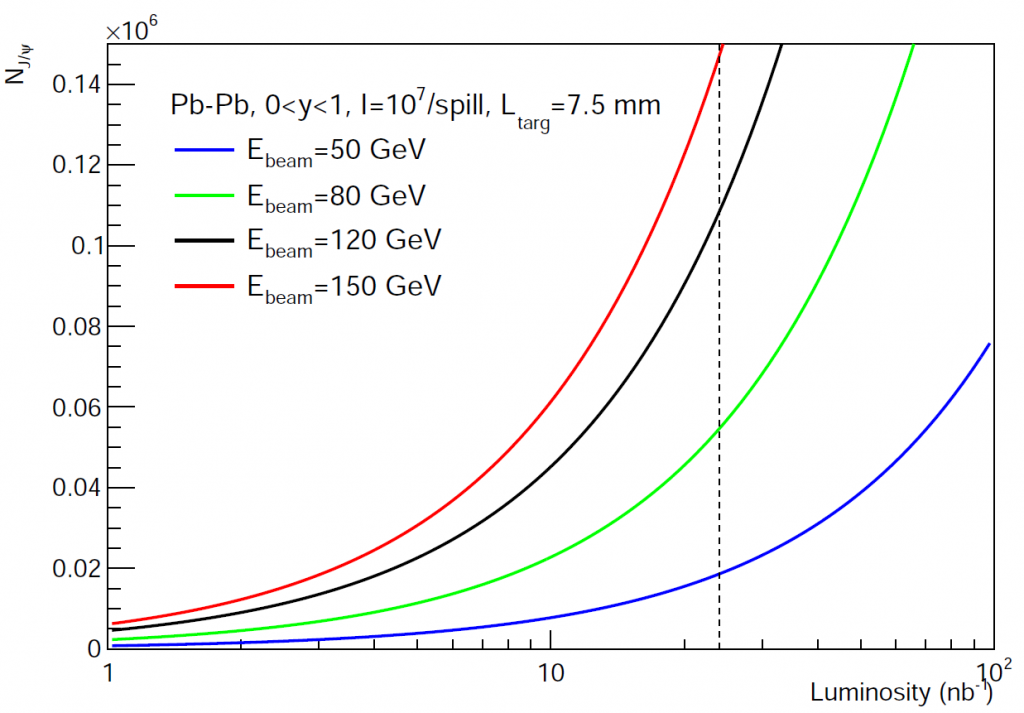
ψ(2S)
The study of ψ(2S) production gives further important information on the mechanisms connected with charmonium suppression. Being weakly bound, its suppression is expected to be stronger than that of the J/ψ. This feature was observed at top SPS energy by the NA50 experiment (Elab=158 AGeV). Experimentally, its measurement is more difficult because its yield in the dimuon decay channel is a factor ~50 smaller. NA60+ can push this measurement down to Elab=120 GeV in a 1-month data taking period. Extending this measurement to lower energy would require an increase in the integrated luminosity (either a longer data taking period and/or a thicker target).
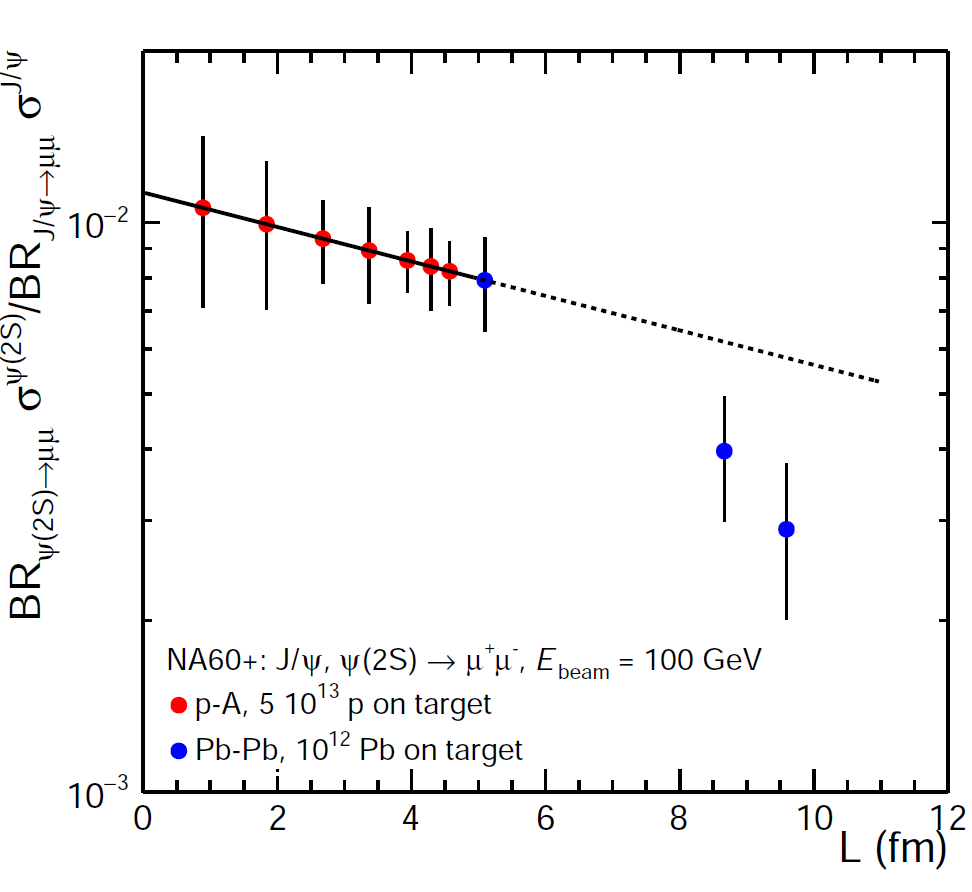
Hadronic decays of open charm hadrons
The production and propagation of charm quarks in nuclear collisions gives insight into the QGP transport properties. Studies of the nuclear modification factor RAA and elliptic flow v2 allow accessing the charm diffusion coefficient. At SPS energy, the hadronic phase represents a large part of the evolution of the collision, therefore studies in this energy range are complementary to those at collider energies, where the QGP phase is dominant. In addition, measurements of various charm mesons (D0, D+, Ds) and baryons (Λc) give information on the hadronization mechanisms of the QGP, and the ratios Ds/D0 and Λc/D0 should be enhanced if hadronization proceeds via quark recombination. In pA collisions, open charm production is sensitive to the modification of the gluon PDFs in the Bjorken-x region 0.1<x<0.3 where anti-shadowing and the EMC effect can be studied. No direct measurements of open charm production in nuclear collisions are presently available at SPS energies.
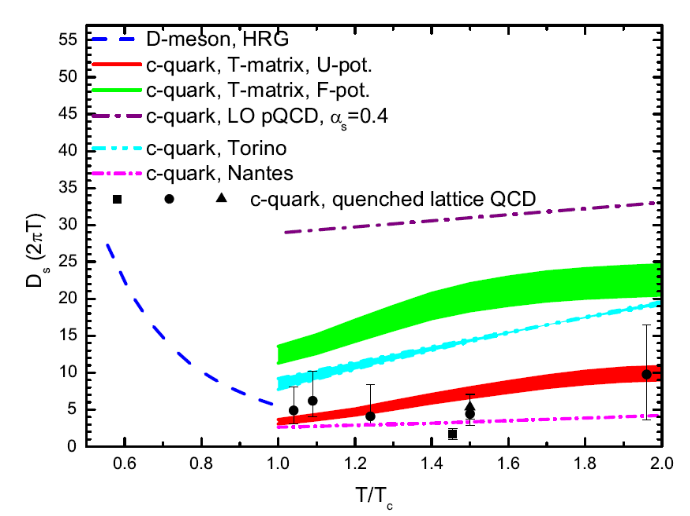
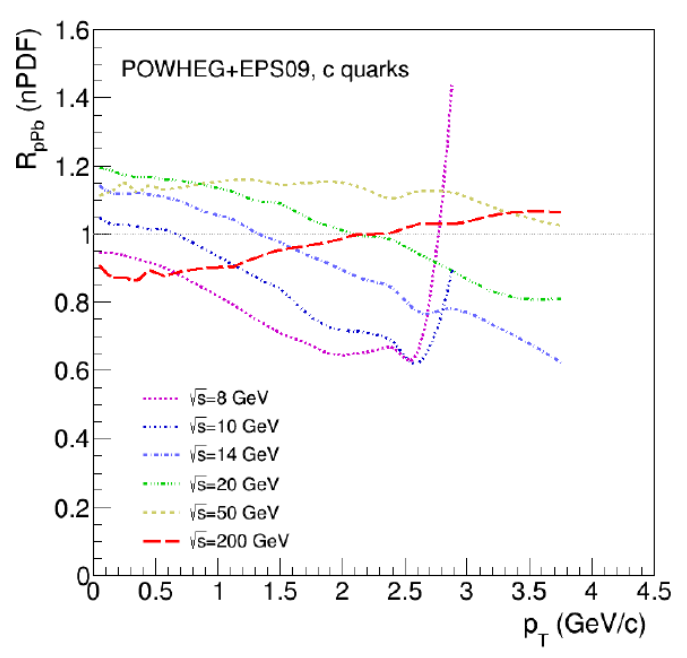
2-prong decays: D0 production
Open charm production can be studied in NA60+ by measuring hadronic decay modes, reconstructing the tracks in the vertex spectrometer. Simulations were performed for central Pb-Pb collisions, using as an input for D-mesons the pT and y distributions predicted from POWHEG-BOX+PYTHIA. The combinatorial background was generated from kinematic distributions of π, K and p measured by NA49. The D-meson decay vertex is reconstructed from decay tracks (no PID is assumed) and various geometrical selections were applied, based on displaced decay vertex topology. In central Pb-Pb collisions, starting from a signal/background ratio S/B of 10-7, it is possible to reach S/B~0.5.
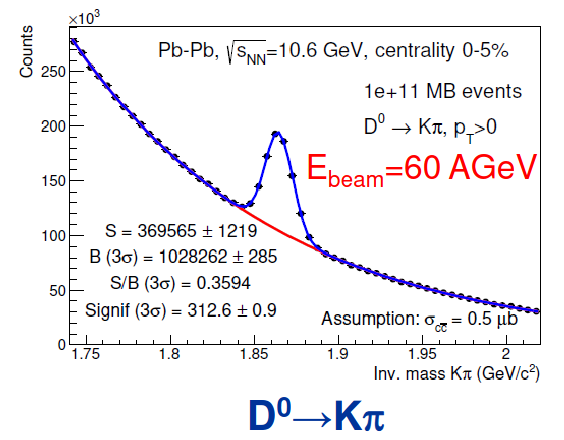
3-prong decays: Ds and Λc production
A similar procedure was applied to study the more demanding, in terms of S/B, 3-prong decays of charm hadrons. Results were obtained for the Ds and Λc hadrons at top SPS energy (158 GeV) showing values of S/B>0.1.
